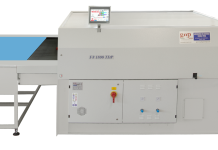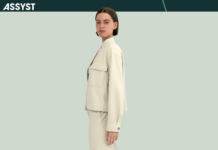 The core principle of a wedding day is to arouse wonder, to go as close as possible to that childhood dream of a girl that becomes the protagonist of a fairytale entering a ballroom in a unique dress
The core principle of a wedding day is to arouse wonder, to go as close as possible to that childhood dream of a girl that becomes the protagonist of a fairytale entering a ballroom in a unique dress
The connection between the bride and her wedding dress originates from the feeling of wonder she experiences in the atelier. There is no “perfect collection”; the perfect dress is an “ad personam” concept just like its choice. Fairytale, traditional or glamour, the white dress is about you, your family and your values, it’s the testimony of a love that is being celebrated during the most unforgettable day of your life. The importance of a painting comes from the canvas when the artist puts his knowledge and love during the execution, in order to give real life to the subject of his painting. The same “love” process takes part when a designer creates a wedding dress and the dress is chosen.
“To transform dreams into reality” is certainly not easy, you need to have high skills and consolidated know-how as well as deep sensibility to be able to feel the emotions and create a dialogue between the dress and the lucky lady in question.
 The dress examined in this issue is a wedding dress from Rosanna Bassi Collection produced and distributed by Rosanna Bassi Spose di Altamura in the province of Bari, a company founded in 2000 and member of the association of Apulia Fashion Makers, which highlights the preciousness of made-in-Italy products as 100% priority in the fashion system. Dedication, meticulous processing, refined taste and high standards of used raw materials differentiate the creations of this Apulian designer, making this brand so recognizable. In addition to quality and innovation, this item also has uniqueness, sartorial tailoring, embroideries, plaits and details, which give it a precious and elegant allure.
The dress examined in this issue is a wedding dress from Rosanna Bassi Collection produced and distributed by Rosanna Bassi Spose di Altamura in the province of Bari, a company founded in 2000 and member of the association of Apulia Fashion Makers, which highlights the preciousness of made-in-Italy products as 100% priority in the fashion system. Dedication, meticulous processing, refined taste and high standards of used raw materials differentiate the creations of this Apulian designer, making this brand so recognizable. In addition to quality and innovation, this item also has uniqueness, sartorial tailoring, embroideries, plaits and details, which give it a precious and elegant allure.
 The attention to the smallest details, paired with an indefinite amount of working hours for each creation, makes it possible to realize “the dream wedding dress”. Handmade means also personalization: each single detail has a meaning and creates a story in the life of each dress that becomes interconnected with the story of the woman who is going to wear it.
The attention to the smallest details, paired with an indefinite amount of working hours for each creation, makes it possible to realize “the dream wedding dress”. Handmade means also personalization: each single detail has a meaning and creates a story in the life of each dress that becomes interconnected with the story of the woman who is going to wear it.
Today the creation of a wedding dress requires experience and skills that go beyond style and market dynamics, such as psychic meaning, feelings and evolution of society. Even though the inspiration of the company comes from the historic age of the nineteenth century, the epochal joining link is found in dynamism, a need towards which women were so inclined to in the past as much as in modern times. Feminine and sophisticated but also determined in being instead of appearing, in a society that, despite the numerous battles for emancipation, would still prefer women to choose appearance as their supreme priority.
ANALYSIS AND STRUCTURE OF THE DRESS
For an in-depth analysis of the dress, we have used the collaboration of Rosanna Bassi, creative manager and owner of the company. The stylistic idea is originated from the wish to create a dress for a modern and active woman, who prefers convenience and comfort without giving up on the idea of wearing a romantic and precious dress. Another objective is the appreciation of female forms even in bigger sizes thanks to appropriate stylistic and technical practices. Observing the dress from a technical point of view, it’s possible to notice its technical sartorial traits, a peculiarity that is not always appreciated and found nowadays. An example of pure craftsmanship, the dress reveals its frequent hand stitches, which emphasize its tangible value and preciousness. In the front, the dress presents a horizontal imperial style-cut, embellished by a strass band with a draped motif in the upper part that comfortably covers the breasts followed by another embellished strass band on both sides of the neck towards the back. A long cloth uniquely cut in oblique starts from the bottom of the front part, to offer a sinuous, soft and fascinating aspect to the dress. On the back there is a wide neckline; the bands that hold together the front folds interlace on the back and finish near the hips in correspondence to the lower part of the front folds. The horizontal strass band is prolonged towards the back but it has a rounder shape near the waistline to emphasize the nude back. From the waistline towards the bottom, the dress presents two cloths cut on the grain with further pleats to better accompany the waist shape; at the bottom, a short tail amplified by a triangular insert. The dress can be easily worn thanks to an invisible zip on the left side. This dress was created with 5 meters of 100% satin silk, 5 meters of polyester lining, 1.5 meters of tulle with about 800 Swarovski crystals.
PRODUCTION PHASES
The sartorial characteristics of the dress do not allow any mass production. The items are cut and assembled individually. The cutting phases do not present any particular difficulty other than the typical ones when dealing with this type of garments that require manual cuts, large working spaces and a natural attitude for handling delicate fabrics. Amongst the first phases there is the preparation of the upper front part composed by mellosan cotton cloth that, stiffened by an adhesive cloth, gives the right shape to the breasts and the neckline; the right wearability is guaranteed by a cut in correspondence to the breasts and by a stick inserted in a small section along the stitching.
This base is then positioned on the mannequin and the exterior part in silk is applied; as it is cut obliquely it must be modeled following the base in cotton and creating light folds in correspondence to the crossing band that surrounds the neck, the folds are then fixed with some hidden hand stitches. The upper part is finished with an internal lining doubled with adhesive cloth. The neckline band has a hidden junction under the folds because the right side is composed only by double-layered silk whilst the left side has double-layered silk and also a tulle band applied manually and covered with Swarovski crystals. Subsequently, two additional bands are prepared, one for the part below the front corset and another for the back neckline; both of them are cut obliquely and thanks to a permanent press they are modeled following the shape of the back and the front; an additional tulle band covered with strass is then manually applied to both bands. The bottom part of the dress seems to be very simple to assemble, but in reality the operation requires to be even more careful as in this phase the front of the dress, cut obliquely, will be joined with the back part, cut on the grain; this junction, especially on long stitches, can generate an unbalanced visual effect or the stitches could stretch. Finally, the bottom of the dress is finished by hand with a double 5mm pleat. The final ironing is limited to small pressures only on the bottom of the dress, mainly to eliminate any wrinkle created during the final processing phases.




